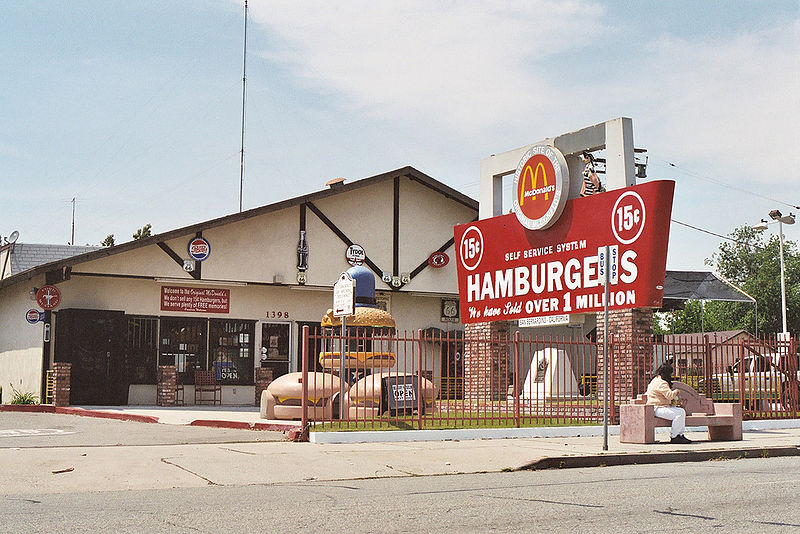Once upon a time, the global behemoth was a tiny barbecue joint in San Bernardino, California. operated by two brothers. And it was a failure. Eight years later, the McDonald brothers reopened — substituting china and silverware for paper wrappers and cardboard cups.
The barbecue was out and burgers, fries, and shakes were in. Once the brothers partnered with milkshake maven Ray Kroc in the 1950s, business boomed.
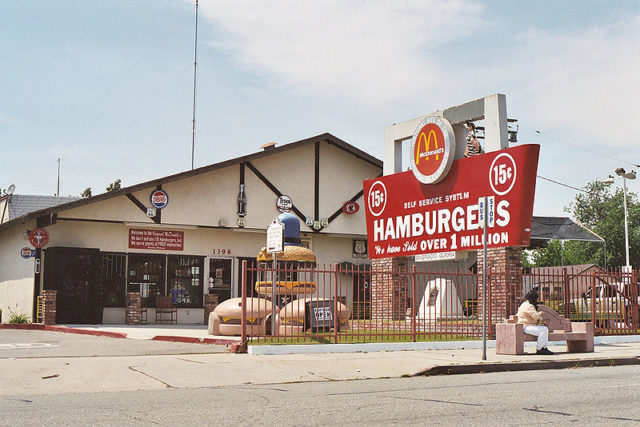
On the way to becoming Hollywood producers
As the Great Depression strangled the mill towns of their native New Hampshire, a pair of young brothers headed west with dreams of making it big as Hollywood producers. The only work that Richard and Maurice McDonald could ever land in the film industry, however, was pushing around movie sets, and the small cinema they opened in suburban Los Angeles fizzled.
Thirty-seven-year-old Maurice and 31-year-old Richard had to wonder if their hopes of becoming millionaires by the time they turned 50 were just delusions as they opened a tiny drive-in hot dog stand (no hamburgers were on the menu) in Pasadena in 1937. It was a typical drive-in of its era, where drivers parked their cars and carhops came to take their orders. In 1940, they closed the hot dog stand and opened a larger restaurant in San Bernardino.
Old McDonald…
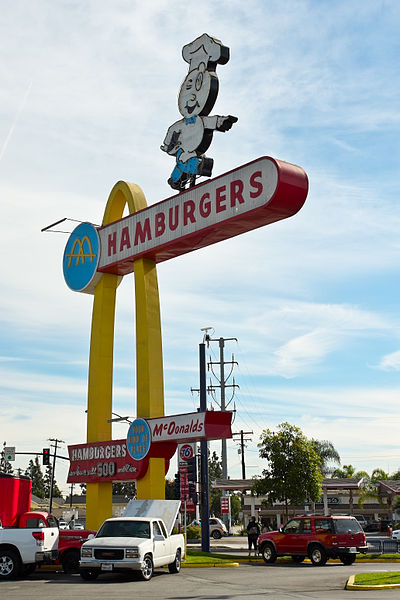
The original McDonald’s, just a few blocks from historic Route 66, bore little resemblance to today’s ubiquitous “golden arches,” beginning with the menu. Hard as it may be to believe, the future fast-food giant started out by serving up barbecue slow-cooked for hours in a pit stocked with hickory chips imported from Arkansas.
The feature item at McDonald’s Famous Bar-B-Q was a barbecued beef, ham or pork sandwich with french fries for 35 cents. The eclectic 25-item menu included everything from tamales and chili to peanut butter and jelly sandwiches to ham and baked beans. The 25-cent “aristocratic hamburger” sounded like an offering better suited for Burger King.
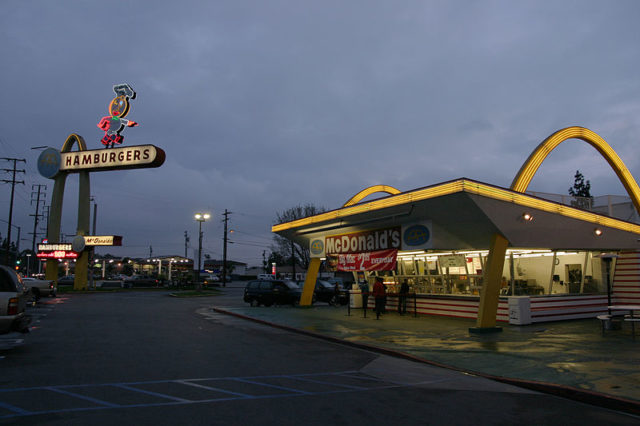
The octagon-shaped drive-in barbecue joint lacked inside seating and sported a few stools at its exterior counters, but female carhops in majorette boots and short skirts served most customers who pulled into its parking lot. As the brothers’ business caught on, sales topped $200,000 a year, and as many as 125 cars filled its parking lot on the weekends.
Holly Cows and Pigs
Originally a barbecue drive-in, the brothers discovered that most of their profits came from hamburgers. In 1948, they closed their restaurant for three months, reopening it in December as a walk-up hamburger stand that sold hamburgers, potato chips, and orange juice; the following year, french fries and Coca-Cola were added to the menu. This simplified menu and food preparation using assembly line principles allowed them to sell hamburgers for 15 cents, or about half as much as at a sit-down restaurant. The restaurant was very successful, and the brothers started to franchise the concept in 1953.
The Big M
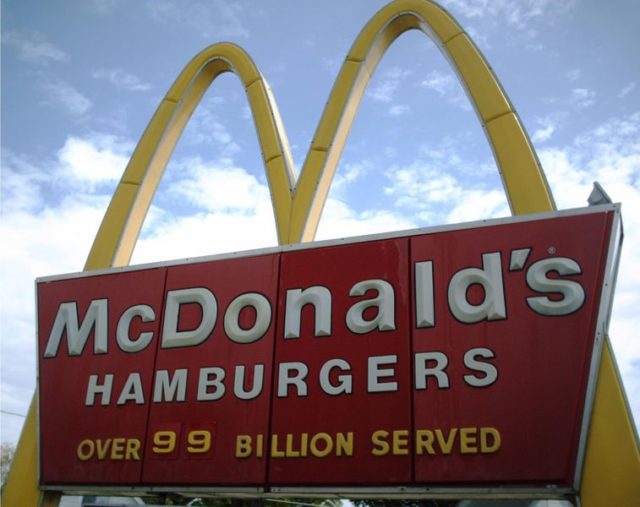
Very few early McDonald’s restaurants remain, largely because McDonald’s Corporation required its franchisees to update their buildings. The original hexagonal McDonald’s hamburger stand in San Bernardino was demolished in 1957 to be replaced by a building in the Golden Arches style; in an oversight, the McDonald brothers failed to retain rights to the McDonald’s name when they sold the chain to Kroc and were forced to rename it “The Big M”. It went out of business and was demolished in the 1980s, although part of the sign remains; an independent McDonald’s museum was subsequently opened on the site.
